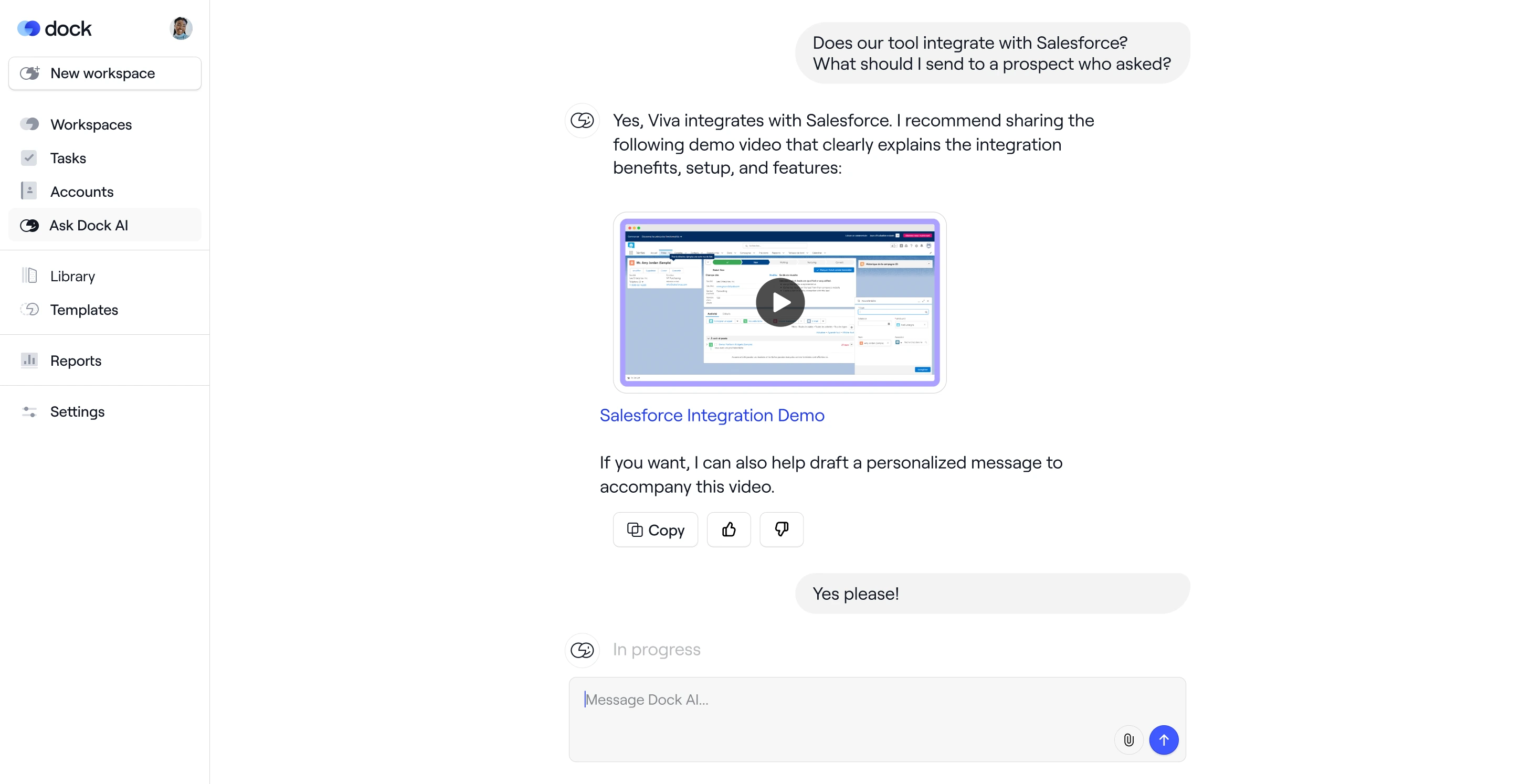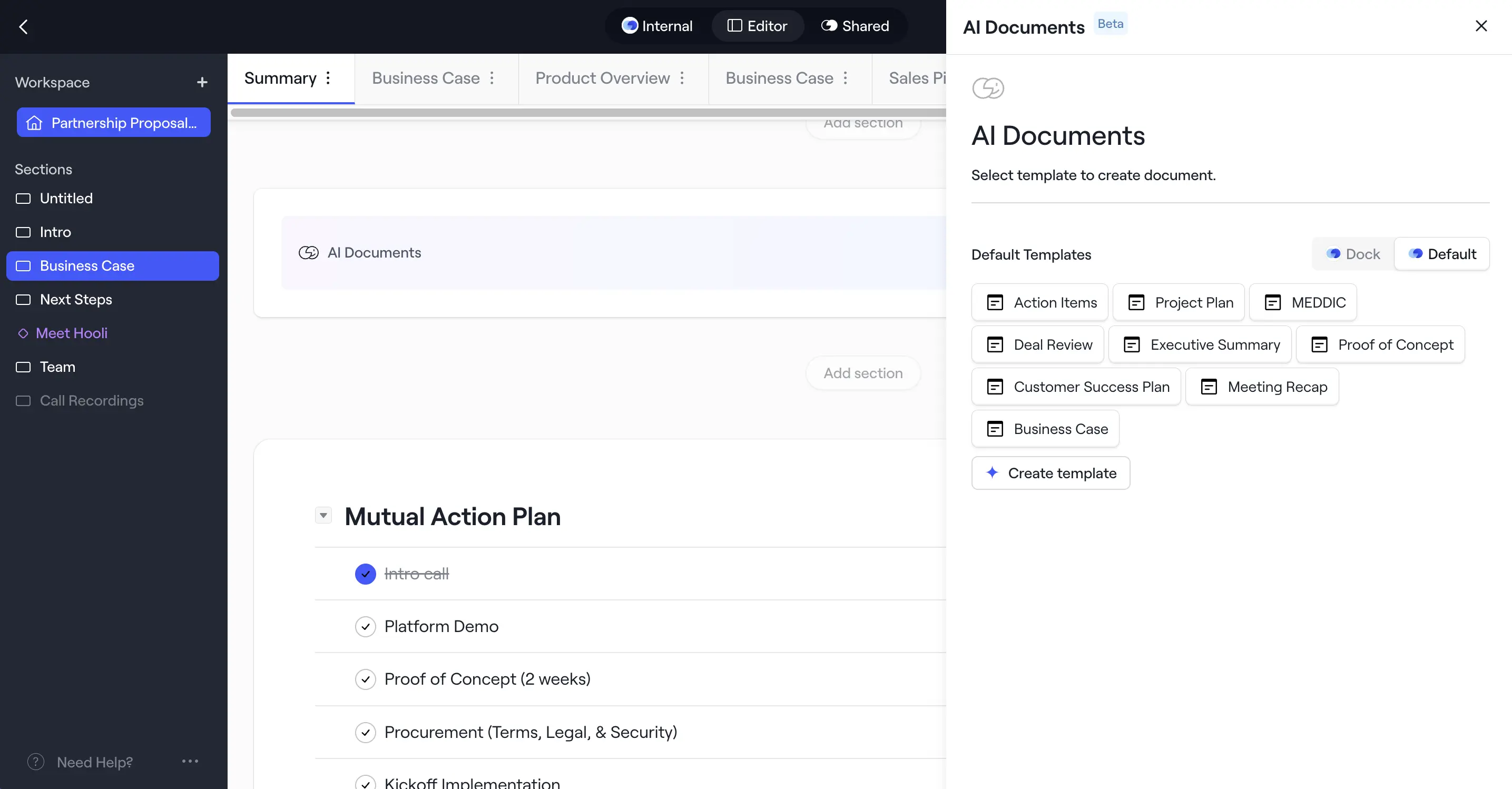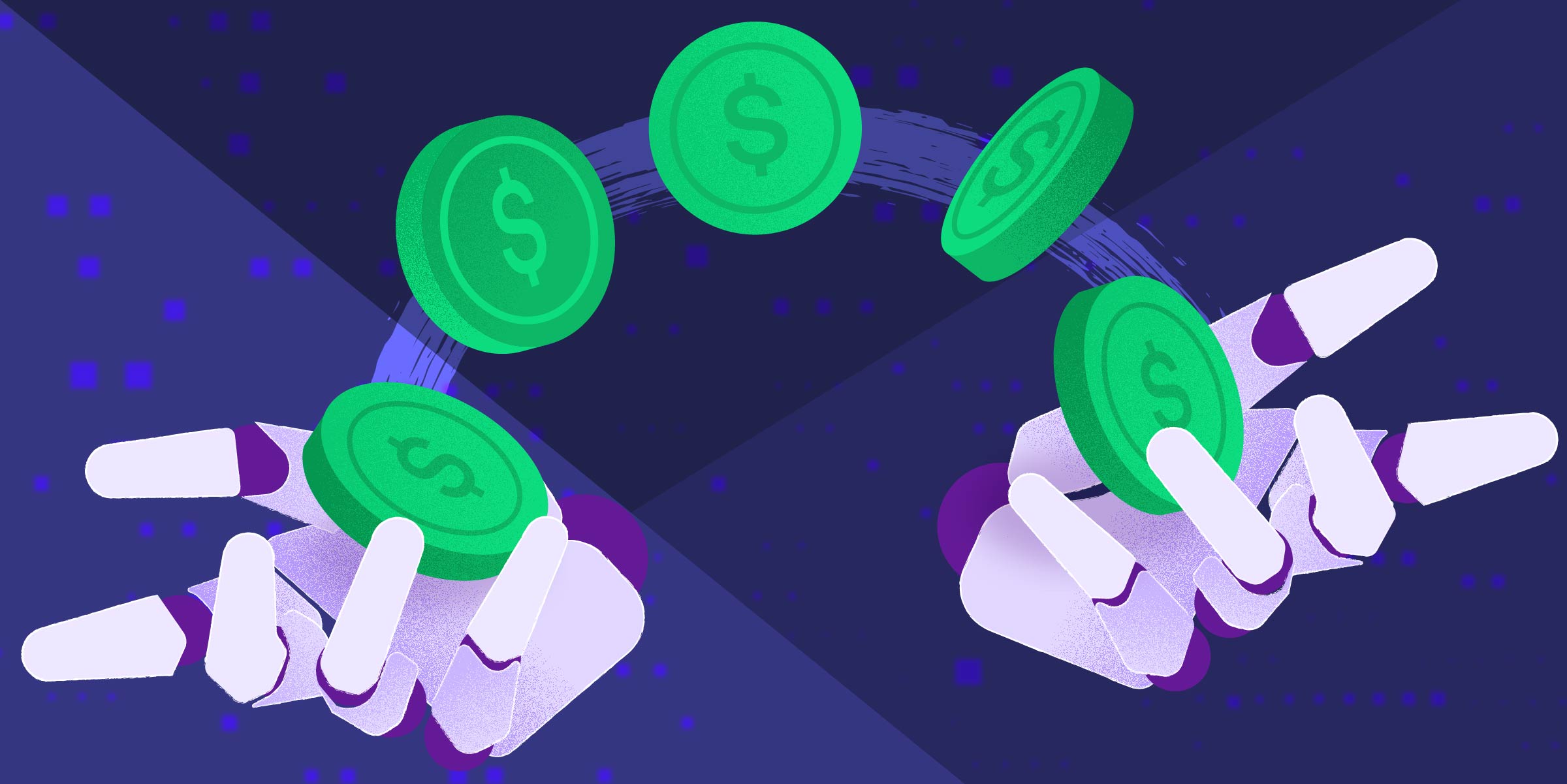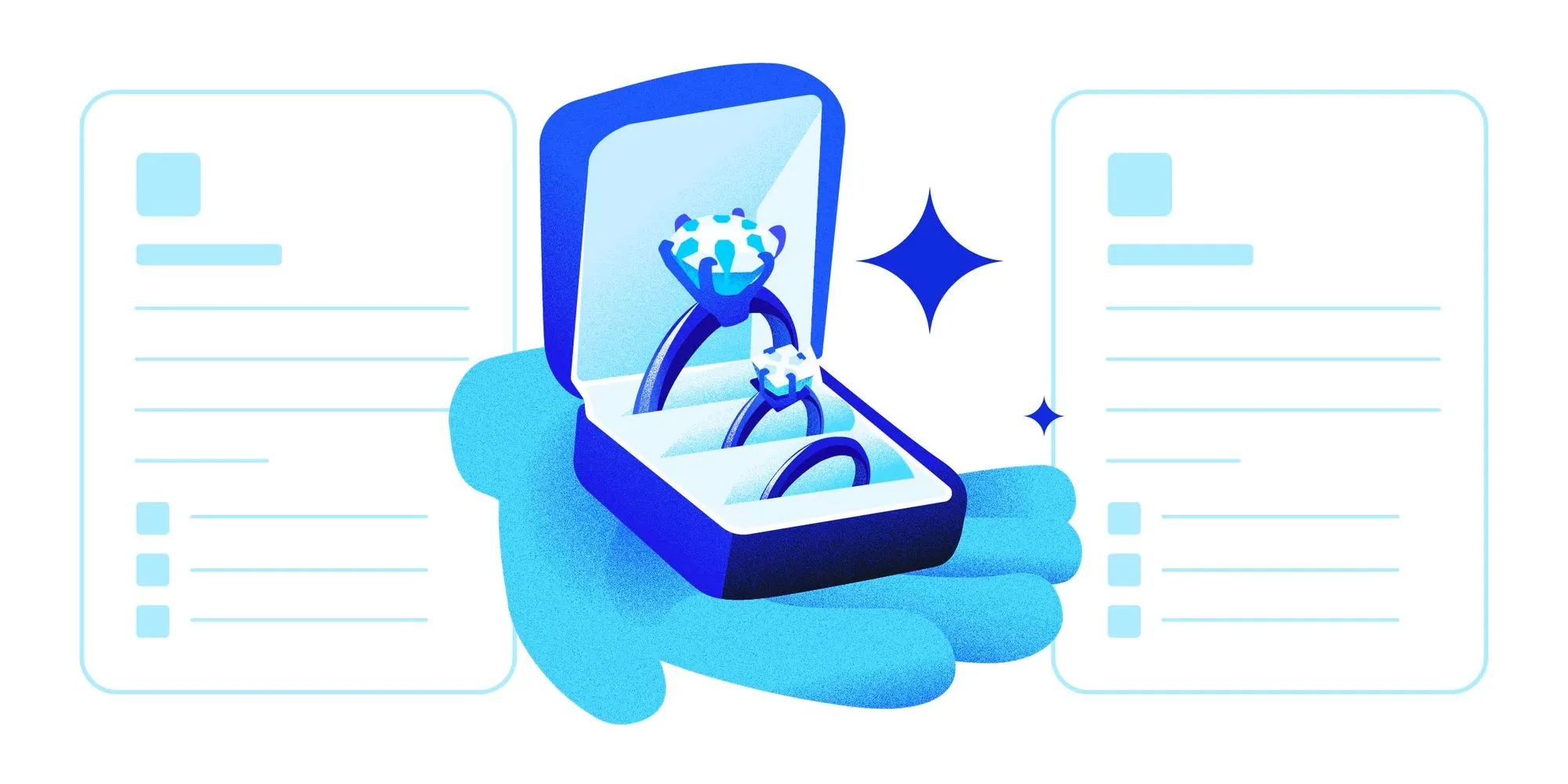Product
TABLE OF CONTENTs
TABLE OF CONTENT
Every year, another wave of buzzwords threatens to sink the sales enablement function under the weight of vendor hype.
"AI-guided selling" is the latest phrase making the rounds. And yes, there's hype. But beneath the marketing gloss, there's something worth paying attention to.
The enablement model most companies still use was built for a different era:
Train your reps, upload content to a repository, hope they remember it all when they need it, and review the damage weeks later when the deal is already lost.
AI-guided selling offers a fundamentally different approach: real-time support, embedded in the systems reps already use, surfacing the right insight at the moment it matters.
This isn't about replacing your reps or enablement team with chatbots. It's about helping them move faster, coach better, and follow up smarter.
Here's what AI-guided selling actually means, how it compares to traditional enablement, and how to roll it out without falling for vaporware.
AI-guided selling tools pull in a combination of CRM data, call transcripts, email threads, content libraries, playbooks, and other connected revenue tools to understand deal context, then deliver relevant guidance directly into the rep's workflow.
The common thread: revenue enablement becomes continuous, not episodic.
We're still early in this shift, and it requires rethinking sales enablement as infrastructure rather than curriculum. But for teams tired of watching training investments evaporate the moment a rep jumps on their first call, the change is already delivering value.
Core principles of AI-guided selling
What makes AI-guided selling different from traditional enablement?
It comes down to a few core principles that shift enablement from static programs to continuous support:
Here’s a deeper look into this philosophical shift.
1. Faster feedback loops
Traditional enablement operates on a slow cycle:
train → wait → hope → review → repeat
AI compresses this loop. It uncovers:
- Is the rep following the playbook?
- Is the deal progressing?
- Are the buyers engaging in the way you’d expect?
AI provides immediate signals that let you course correct in real time—for individual reps, for managers coaching deals, and for the enablement team refining programs.
2. Real-time enablement
Reps don’t need to memorize everything. They need the right information when they need it.
AI can surface the relevant template, objection handler, or next step in context—during a follow-up, on a call, mid-email.
This shifts enablement from a static training event to an always-on resource.
Instead of front-loading knowledge during onboarding and hoping it sticks, you deliver value at the moment of need. Reps learn by doing, and the system adapts as they get better.
3. Enablement becomes more measurable
Historically, it's been hard to quantify the impact of training or content.
Did that certification course actually improve win rates? Which case studies are moving deals forward? Connecting those metrics to revenue outcomes required guesswork.
AI tools provide more engagement data, usage patterns, and outcome links.
You’ll be able to see which content correlates with closed deals, which objection-handling reps are actually using, and where coaching efforts are paying off. Now you can optimize enablement like a product team: iterate, test, improve.
4. Personalization at scale
Buyers expect personalized experiences. They want proposals that speak to their industry, case studies from companies like theirs, and follow-ups that reference the specific pain points they mentioned on the call.
But most reps don't have the time or systems to deliver this level of customization manually.
AI bridges that gap. It can generate templated-but-personalized workspaces, follow-ups, and onboarding plans based on CRM data, call notes, and buyer behavior.
Every buyer journey can feel tailor-made, without requiring heroics from the rep.
Personalization used to be a luxury reserved for enterprise deals with dedicated account teams. AI makes it scalable for every deal.
5. Manager as coach, not micromanager
AI gives frontline managers visibility into rep behavior and deal momentum without constant check-ins.
Instead of asking "Did you follow up with that prospect?" managers can see the answer in the system. Instead of guessing which deals need attention, they get alerts based on engagement patterns and deal velocity.
This frees managers to coach the right deals at the right time, and to develop reps instead of chasing pipeline hygiene.
The best managers want to spend their time helping reps improve. AI lets them do that by automating the parts of their job that shouldn't require human intervention.
6. Rep autonomy with guardrails
Reps still own the deal. AI doesn't take over—it provides a smarter playbook, structured templates, and in-the-moment help. This empowers newer reps to execute like veterans while keeping the pitch consistent.
Your best reps already know what to do. AI helps the rest of the team catch up faster, without forcing everyone through rigid scripts or workflows that slow them down.
7. From enablement-as-training to enablement-as-infrastructure
AI-guided selling isn't a campaign or a program. It's an embedded layer in your go-to-market stack.
Enablement's role evolves from event planner to systems designer. You're building environments where selling gets easier, not running one-off trainings.
This is a fundamental shift in how enablement operates. Instead of asking "What should we teach next quarter?" you ask "How do we make it easier for reps to do the right thing every time?"
8. AI is a force multiplier, not a replacement
To be clear, AI doesn't replace enablement—it amplifies it. It helps small teams scale their impact across larger or more distributed sales organizations. And it allows reps to learn by doing, not just by attending sessions.
The reps who will struggle with AI-guided selling are the same reps who struggle with traditional enablement: the ones who don't want to improve.
For everyone else, AI is a co-pilot that helps them get better, faster.
Examples of AI-guided selling in practice
The principles sound good on paper. Here's what they look like in action across the sales cycle.
Pre-call sales training and coaching
On-demand answers. Dock’s AI Enablement Agent pulls from your sales playbooks, content library, CRM data, and product information to answer rep questions instantly. Instead of searching through Google Drive, Notion, or Slack, reps get the answer in seconds.

AI role-play simulations. Reps practice calls with AI personas that simulate buyer objections and give feedback on their responses. Tools like Second Nature, Letter, and Spekit let reps build muscle memory without requiring a manager's time.
AI certifications. Automatically evaluate demo recordings or call snippets for adherence to talk tracks. Reps get scored on whether they hit key points, and managers get visibility into who's ready for live deals.
Real-time sales coaching
On-call AI coaching. Suggests next best questions or talk tracks during a live sales call. Tools like Gong Engage listen to the conversation and surface relevant prompts on the rep's screen.
Live objection handling. Surfaces answers or battle cards mid-conversation based on what's being said. If a buyer raises a pricing concern, the system immediately pulls up your pricing FAQ or ROI calculator.
Meeting monitoring and alerts. Flags rep talk time, pricing objections, or missing decision-makers. Managers can review these alerts after the call to provide targeted coaching.
Post-call and post-action guidance
Call and email summarization. Auto-generated summaries of sales calls with next steps, sentiment, and risks. Tools like Fathom and Chorus turn hour-long recordings into five-minute reads.
Follow-up content recommendations. Suggests what asset or link to send based on the call transcript or CRM activity. If a buyer mentioned they're concerned about implementation, the system recommends sending a customer success case study.
Opportunity health scoring. Uses AI to assess deal velocity, stakeholder engagement, and buyer intent. Flags deals that are at risk of stalling so managers can intervene early.
Content and follow-up automation
AI-powered sales deal rooms. Instead of scattering links and attachments across email threads, reps can use tools like Dock to create personalized digital sales rooms that consolidate everything a buyer needs in one place—pricing, case studies, implementation plans, and next steps.
AI can auto-populate these workspaces with relevant content based on the buyer's industry, role, deal stage, and previous call transcripts, and then track engagement to show which stakeholders are active and what content is resonating.

Auto-generated sales collateral. Build custom deal rooms, proposals, business cases, or recaps from CRM data and call notes.
At Dock, we helped Lattice roll out AI-generated business cases—a small but impactful project that saved reps hours per deal.

Personalized outreach at scale. AI-generated emails tailored to persona, company, and buying signals. Tools like Lavender and Regie.ai help reps write better emails faster, with real-time feedback on tone and clarity.
Recommended next steps. The system suggests the next best action or auto-generates follow-up language based on where the deal stands. Reps don't have to guess what to do next—the playbook is built into the workflow.
Buyer behavior insights
Engagement pattern analysis. Surfaces which stakeholders are active, who's dropped off, and what's resonating. If the economic buyer hasn't opened any of your materials, that's a signal to adjust your approach.

AI-driven forecasting. Predicts deal success based on historical data and buyer engagement. Sales leaders get more accurate pipeline visibility, and reps get guidance on where to focus their time.
Content intelligence. Identifies which case studies, decks, or videos are most correlated with closed deals. You can double down on the content that works and retire the content that doesn't.
How to evaluate AI-guided selling tools
Not all AI is created equal. Some vendors slap "AI-powered" on their homepage without delivering meaningful functionality. Here's what to look for beyond the flashy claims:
Native CRM integration. If the tool doesn't integrate seamlessly with your CRM, reps won't use it. Look for systems that pull data automatically and push updates back without requiring manual entry.
Real-time usefulness. Passive dashboards don't help reps in the moment. The best tools surface insights when reps need them—during a call, while writing an email, or when planning next steps.
Adoption among reps and managers. AI tools that require extensive training or disrupt existing workflows will fail. Look for solutions that fit naturally into how your team already works, rather than forcing them into new workflows.
Flexibility to fit your GTM motion. Every company sells differently. The tool should adapt to your sales process, not force you to change your process to fit the tool.
Red flags to watch for:
- "AI" as a bolt-on feature rather than core to the product
- Tools that require extensive configuration before delivering value
- Vendors who can't explain how their AI actually works
- Systems that provide insights without actionable recommendations
Steps to roll out AI-guided selling
Start small. Prove value. Scale from there. Here's a phased approach:
1. Crawl: Pick one sales motion
Don't try to transform your entire enablement program at once. Choose one high-impact use case: post-discovery follow-up, late-stage deal support, or manager coaching for new reps.
Run a pilot with a small team. Track specific metrics—time to first deal, follow-up consistency, win rate improvement. Use the pilot to prove ROI before expanding.
2. Walk: Train managers to coach using the new data
AI tools generate insights, but insights don't change behavior on their own.
Train managers to use the data in their coaching conversations. What should they look for? How do they turn engagement signals into actionable feedback?
Managers are the linchpin. If they don't adopt the tool, reps won't either.
3. Run: Embed AI into your enablement infrastructure
Once the pilot proves value, roll it out across the team. Build AI-guided workflows into your onboarding, content management, and coaching processes. The goal is to make AI-guided selling the default way your team operates, not a special project.
At Dock, we've seen this work well when companies start with a focused use case—like auto-generating business cases or buyer-facing workspaces—and then expand as reps see the value.
For example, Lattice started by creating buyer-personalized business cases with Dock AI.
They saw an immediate uplift in close rate from that small change alone. Now they’re experimenting with more applications of AI in their sales motion.
What AI can't do (yet)
AI-guided selling works best when it augments what reps already do well, not when it tries to do their job for them.
AI still can’t build relationships or fully replace human intuition. It can't read a room, pick up on unspoken tension, or adjust a pitch based on body language. It can't replace the judgment that comes from years of experience.
There's also an adoption risk. If reps see AI as intrusive or performative—more surveillance than support—they'll resist it. The best implementations frame AI as a co-pilot, not a replacement or a micromanagement tool.
AI-guided selling is an enhancement, not a replacement
AI-guided selling is not a replacement for enablement. It's about making enablement more effective by delivering the right support at the right time.
Faster feedback loops, just-in-time guidance, and measurable outcomes mean you can finally prove the impact of your programs—and scale them without adding headcount.
The shift from training-as-event to enablement-as-infrastructure is already happening.
The teams that embrace it will move faster, close more deals, and develop reps more effectively than their competitors. The teams that don't will keep running the same training sessions and wondering why nothing sticks.
At Dock, we’re building the revenue enablement platform for the AI era. Our focus is real-time guidance rather than static training. And reps love it.



























.webp)









